|
Janwit Chaisee is a young Thai artist who graduated from the faculty of Painting, Sculpture and Graphic Arts, Silpakorn University, Thailand. He was born in Pattani Province in the South of Thailand. In May 2015, he had a solo art exhibition “Kon” (Human) at People’s Gallery, Bangkok Art and Culture Center. It can be said all of the paintings are stunning and reflect the skills of the artist .
His paintings are wonderful, quite unique in his depiction of human life. He also presents Batik Sarong clothing, as a part of living in the south of Thailand, in his paintings.
Pattani province is his hometown next to the border of Malaysia, As far as I know, many Thai-Muslim men and women in the five southern provinces of Thailand have used batik cloth for their everyday clothing for a long time because batik cloth is colorful and has many unique patterns. Wearing batik clothes can tell the social status of the wearer who might be rich or poor. In many festivals and ceremonies people also like to wear batik clothes. During weekdays, they can always wear batik clothes to work.
I used to study Batik in South East Asia through the eyes of western collectors, expensive batik always from silk and linen. And I saw in everyday life in Bali Indonesia, when women went to give the offering of flowers, they dressed in silk-sarong batik for the ceremony.
Janwit wonderfully expresses the beauty of local people in southern Thailand wearing cotton sarongs in everyday life with colors and patterns that are unique. He brings his knowledge of perspective and the beauty of southern Thailand women to inspire all art lovers: not just nude paintings but surrounded with batik clothes that make his paintings precious.
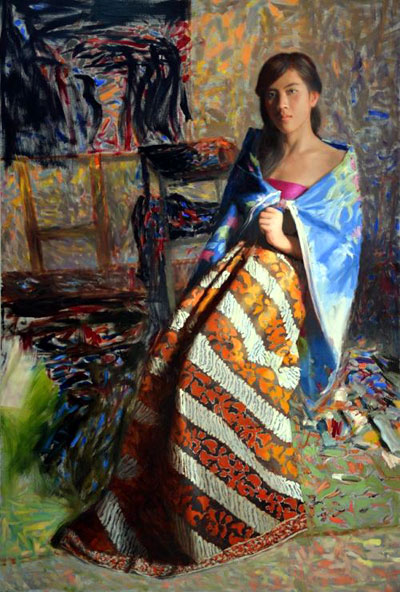
In Southeast Asia, the tradition of making batik is found in various countries: the batik of Indonesia, Malaysia and South Thailand are well-known for their unique styles and patterns. Maybe the best-known Indonesian batik, made on the island of Java, has a long history of acculturation, with diverse patterns influenced by a variety of cultures, and is the most developed in terms of pattern, technique, and the quality of workmanship. In October 2009, UNESCO designated Indonesian batik as a "Masterpiece of Oral and Intangible Heritage of Humanity."
Janwit with his vision of painting has shown his talent with batik clothes for men, women and, children. He has had a number of contemporary art exhibitions since he studied at Silpakorn University. In 2010 he joined the 27th contemporary arts exhibition for young artists. In 2011 he contributed his works to the Art of the Ganesha at Silpakorn Art Space. In 2014 he presented his art thesis to the faculty ofPainting, Sculpture and Graphic Arts, Silpakorn University. The year 2015 contained his art solo exhibition “Khon” (Human).
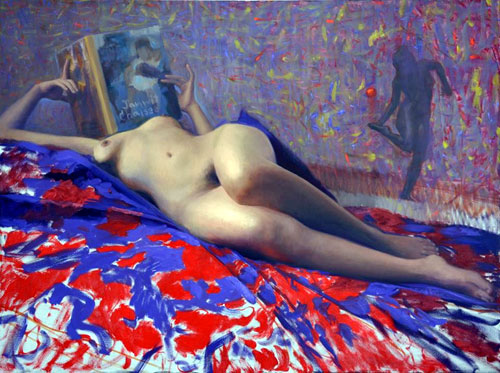
Also, I am certain that anyone who loves nude paintings would be interested in Janwit’s work. His impressive works are realistic portraits.
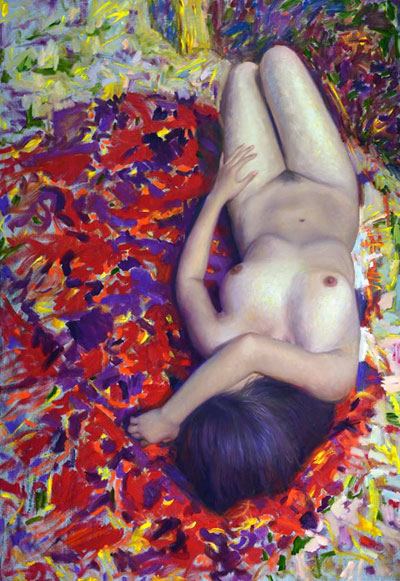
On many occasions he painted portraits of the King of Thailand and those portraits were well received.
Most works in his exhibitions are oil paintings of Thai women with different postures in various costumes. These works are focused on the realism of Thai women in the past. Art students in all art academies such as Silpakorn University practice to draw nude paintings as it is vital to learn human anatomy in order to draw pictures of humans accurately.
He loves to paint beautiful clothes in vibrant colors. Moreover, he can convey and draw out the similarities and differences of the live human models.
During March 2018 Janwit went back to his hometown Pattani and visited many provinces including Yala, Songkla and Narathiwat, which was inspiring for his upcoming painting .He told me that it was a big surprise since during his early years in his home town area the majority of people were Buddhist. He used to think that Thai-Muslim people were the original residents of the area. He traveled, researched, and talked to many local residents who are Buddhists like him. He then found that there are many old temples. The architectural designs tell what time or which dynasties for which these temples were originally built. He sent me some photos of pagodas and temples and we talked about the history of southern Thailand.
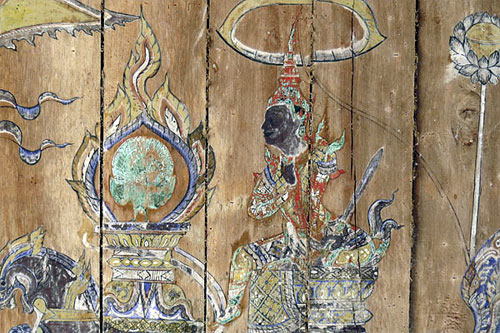
The Siam Peninsula or the Siam-Malay Peninsula was originally an administrative area of four major ancient cities or kingdoms, namely Tambalinga, Lanka Suka, Srivijaya, and Si Thammarat Nakhon or Si Thammarat Maha Nakhon. Si Thammarat Nakhon was also called the 12-Zodiac City as it was composed of 12 cities, namely Kelantan, Pahang, Sai Buri, Kedah, Pattani, Phatthalung, Trang, Banteay Samo (Banteay Sema), Sa Ulao, Takua Thalang, Chumphon, and Kra Buri. The administrative center of these 12 cities is currently in Nakhon Si Thammarat province. Their spiritual center was Phra Borom That Nakhon Si Thammarat; they rotated it to look after Phra Borom That Nakhon Si Thammarat and its vicinity each year. Gold and silver flowers were sent to constantly worship it. The power of Buddhism led to a firm connection among areas in ancient southern Siam, and
this served as a foundation for religious, educational, political, economic, artistic and cultural prosperity. In southern Siam, Tambalinga was the first name that appeared in archaeological evidence, including historical objects, historical sites, stone inscriptions, and Thai and foreign historical documents. This great kingdom existed before 500 BE (43 BC). Its name appeared in Tamlingkam in the Maha Nithet Scripture. It also appeared in the Tan Shaw Stone Inscriptions in South India. In addition, it was found in historical Chinese documents called the Tang-ma-ling or Tan-mei liu. There is evidence showing that over 300 years later, Lankasuka was present in the territories which currently are Sai Buri and Kedah. Buddhist rulers converted to Muslim, the evidence of which is the Yarang Historical Site and Bu Jang Historical Site or Bujang Valley (in Kedah, Malaysia).
Both kingdoms’ administrative power came to the end after the arrival of the power of the Srivichai Kingdom just after 1300 BE (757 AD). Srivijaya’s power covered Siam.
I also asked Janwit to talk about his hometown and interesting local tradition.
JY: Tell us about your hometown
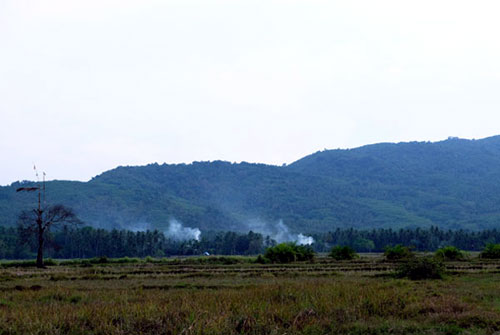
JC: I was born and grew up in Pattani province. The locals living here shortened its name to just “Tani”. My birthplace is in a small village called “Ban Paen” in Saiburi District. The scenery there is so wonderful. In front of my house is the plain with lots of paddy fields. Behind my house is the mountain range. During daytime, the weather is hot and humid from frequent rainfall. In the night, the weather is so refreshing and cool. The way of life for the majority of people here is farming and livestock. Apart from Thai and Yawee languages, people also use one in Pattani and Narathiwat and in some parts of Malaysia near Narathiwat’s border called “Jae-hae”. This language is mostly used by groups of Thai Buddhists.
JY: What about meaningful local traditions?
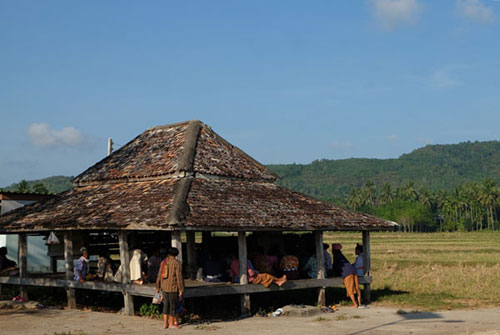
JC: Most local traditions in my hometown are in harmony with the local way of life. For instance, the “La-sung” ceremony is held during the rice harvesting season to pay homage to Mae Phosop (the goddess of rice). For this ceremony, villagers make human-sized straw puppets of a marriage couple (“Toh Chumphuk”) dressed in local clothing and prepare the ceremony like a traditional wedding. The La-sung ceremony is a long-standing belief of villagers that both straw puppets, “Chumphuk”, marry and have a child (rice) in the following year. For the ceremony, Toh Chumphuk is placed in the central wooden pavilion. The villagers prepare sets of food for the offerings to the guardian spirits and Toh Chumphuk. Each set contains chicken curry, fresh chicken blood, dried salty fish, sticky rice in various colors and rice whiskey. The ceremonial
leader will lead the procession till the end. After that, villagers will remove clothes from the straw puppets and then throw the straw up in the air.
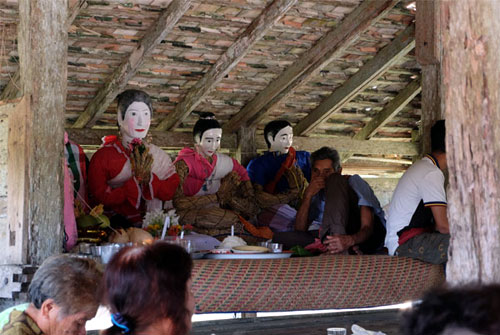
Previous exhibitions
2010 – 27th contemporary art exhibition for young artists
2011 – Art of the Ganesha exhibition at Art Space, Silpakorn University
2014 – Art Thesis for the final year students of the faculty of Painting, Sculpture and Graphic Arts, Silpakorn University
2015 – Solo exhibition “Khon” (Human) at People’s Gallery, Bangkok Art and Culture Center, Bangkok
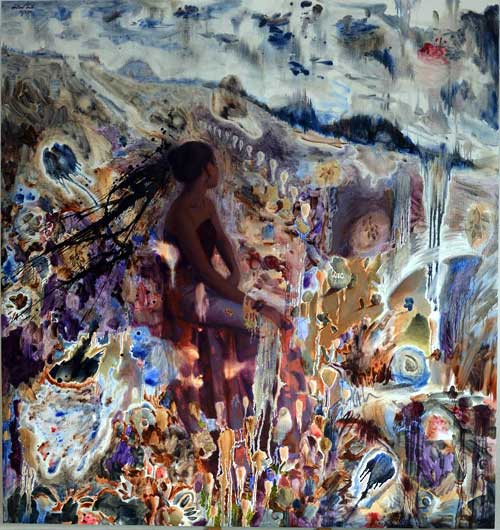
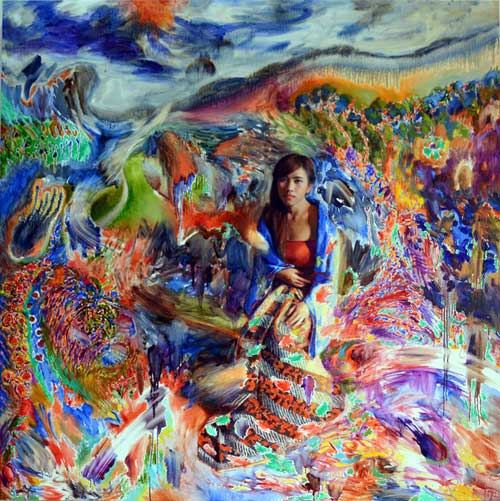
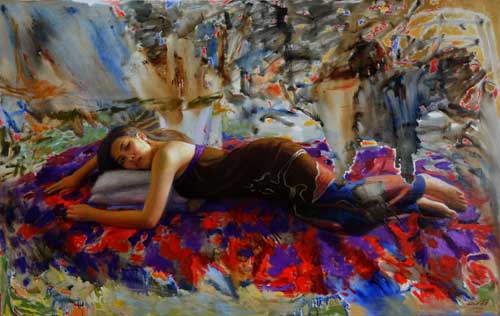
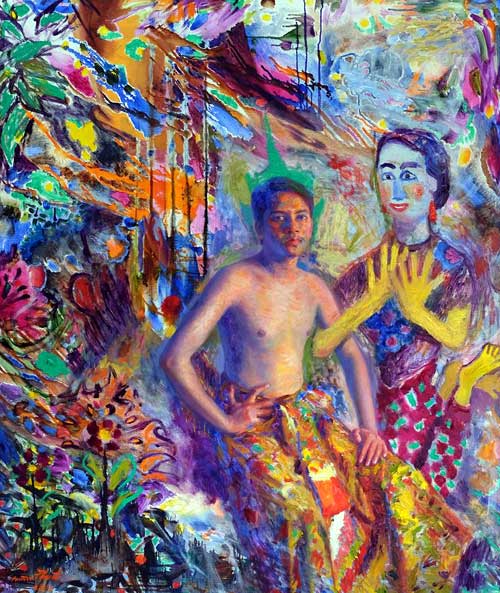
|